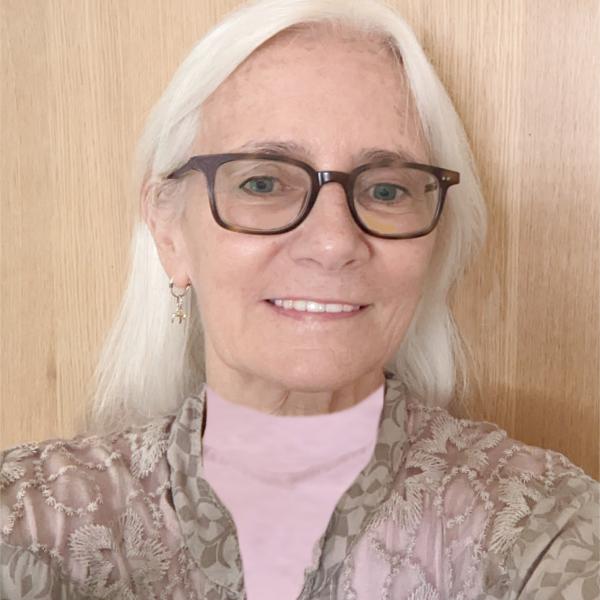
Dr. Diane Brentari’s research interests address the sign language grammars of Deaf communities around the world—how these languages emerge, and the degree of variation that exists among them. Throughout her career she has analyzed the formal, cognitive, and cultural dimensions that motivate the similarities and differences among these languages.
Her work focuses on sign language structure as a way to better understand the flexibility of the human language capacity in constructing spoken and signed languages, as well as the effects of communication mode (or modality) on language. Her current research has expanded to include analyses of a new protactile language that is emerging in DeafBlind communities in the USA, which includes the modalities of proprioception and touch.
Brentari is a fellow of the Linguistic Society of America, a recipient of a Guggenheim Fellowship, and a member of the American Academy of Arts and Sciences.
Recent Publications
BOOKS:
- Brentari, Diane. 2019. Sign language phonology. Cambridge, UK: Cambridge University Press.
- Brentari, Diane, and Jackson Lee. 2018. Shaping Phonology. Chicago: University of Chicago Press.
ARTICLES:
- Brentari, Diane, Susan Goldin-Meadow, Laura Horton, Ann Senghas, and Marie Coppola. 2024. Organization of verb meaning in Lengua de Señas Nicaragüense (LSN): Sequential or simultaneous structures? GLOSSA 8.11–37. doi: https://doi.org/10.16995/glossa.10342
- Martinez del Rio, Aurora, Casey Ferrara, Sanghee Kim, Emre Hakgüder, and Diane Brentari. 2022. Identifying the Correlations Between the Semantics and the Phonology of American Sign Language and British Sign Language: A Vector Space Approach. Frontiers in Psychology. doi:10.3389/fpsyg.2022.806471
- Brentari, Diane, Rabia Ergin, Ann Senghas, Pyeong-Whan Cho, Eli Owens, and Marie Coppola. 2021. Community interactions and phonemic inventories in emerging sign languages. Phonology 38: 571–609. doi:10.1017/S0952675721000336
- Brown, Amanda, Wim Pouw, Diane Brentari, and Susan Goldin-Meadow. 2021. When hands are used to communicate they are less susceptible to illusion than when they are used to estimate. Psychological Science DOI: 10.1177/0956797621991552
- Edwards, Terra, and Diane Brentari. 2021. The grammatical incorporation of demonstratives in an emerging tactile language. Frontiers in Communication: LanguageSciences. https://www.frontiersin.org/articles/10.3389/fpsyg.2020.579992/full
- Edwards, Terra, and Diane Brentari. 2020. Feeling Phonology: The conventionalization of phonology in protactile communities in the United States. Language, 96(4): 819-840. doi.org/10.1353/lan.2020.0063
2020-2021 Course Offerings
Seminar in Phonology & Morphology: Multiple Verb Predicates (LING 52410) - Autumn 2020
This course will address the wide range of multiple verb predicates across the world's languages. Readings will address the diagnostics for the category "serial verb" versus other types of multiple verb predicates in signed and spoken languages.
The American Deaf Community: Language, Culture and Society (LING 26030) - Winter 2021
This course will focus on the Deaf community that uses American Sign Language (ASL) as a lens into the disciplines of linguistics, psychology, and cultural studies, and how the use of ASL contributes to individual identity and identity within society. In addition to these disciplinary foci, topics of Deaf literature and art forms will figure in the discussion and readings, which come from a variety of sources and include seminal works in the field from historical and contemporary perspectives.
2019-2020 Course Offerings
Phonological Analysis I (LING 30101) - Autumn 2019
This course introduces cross-linguistic phonological phenomena and methods of analysis through an in-depth examination of fundamental notions that transcend differences between theoretical approaches: contrast, neutralization, natural classes, distinctive features, and basic non-linear phonological processes (e.g., assimilation, harmony, dissimilation).
The American Deaf Community: Language, Culture and Society (LING 26030) - Winter 2020
This course will focus on the Deaf community that uses American Sign Language (ASL) as a lens into the disciplines of linguistics, psychology, and cultural studies, and how the use of ASL contributes to individual identity and identity within society. In addition to these disciplinary foci, topics of Deaf literature and art forms will figure in the discussion and readings, which come from a variety of sources and include seminal works in the field from historical and contemporary perspectives.
